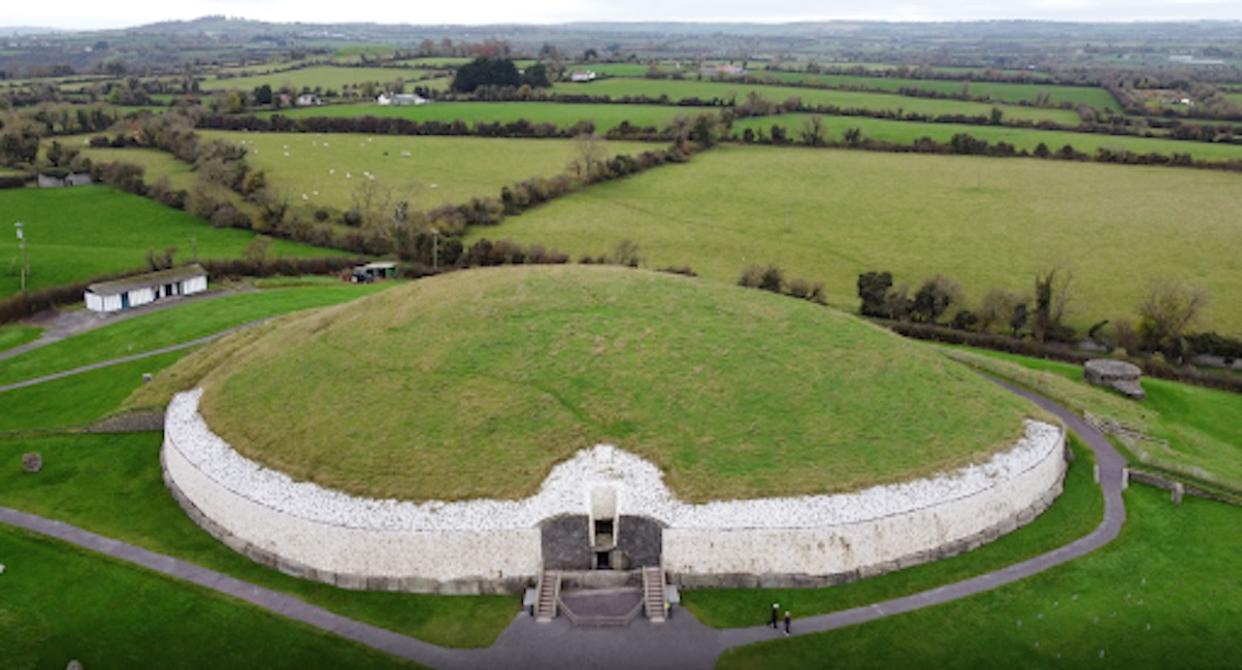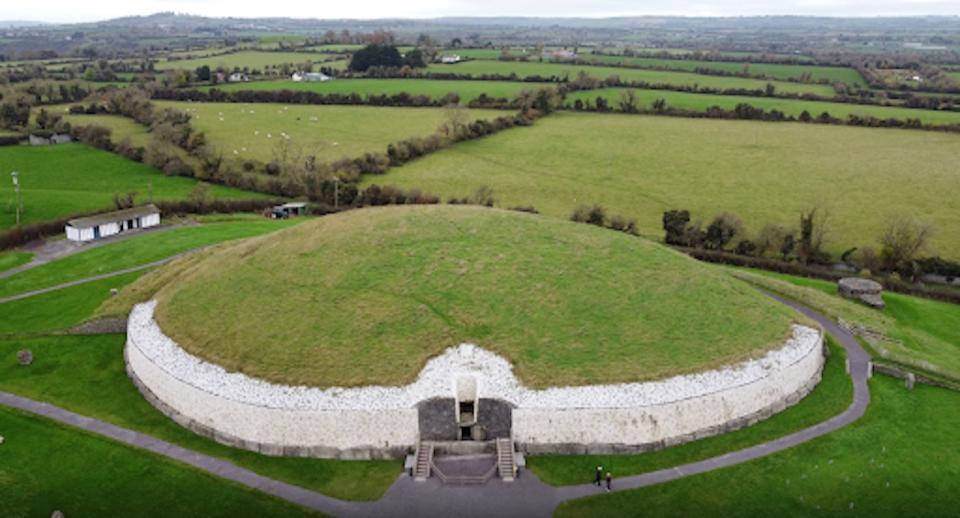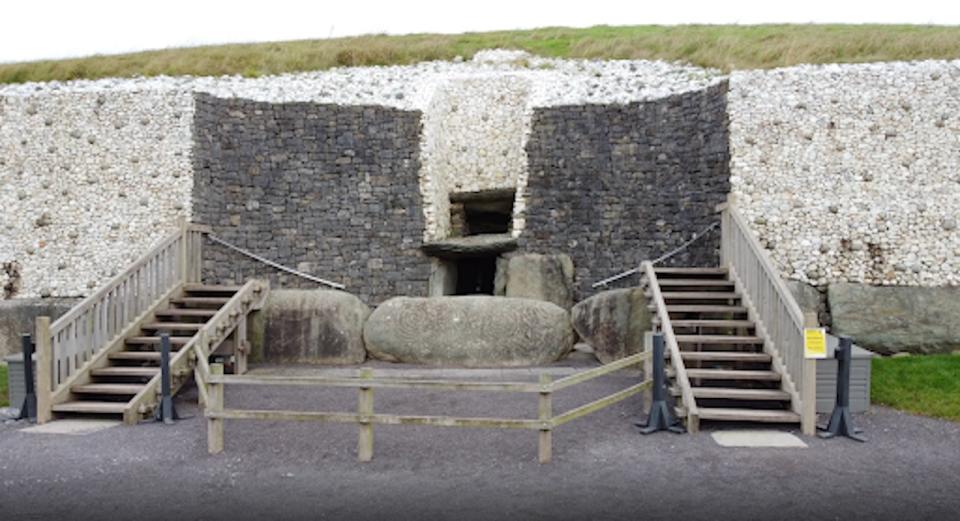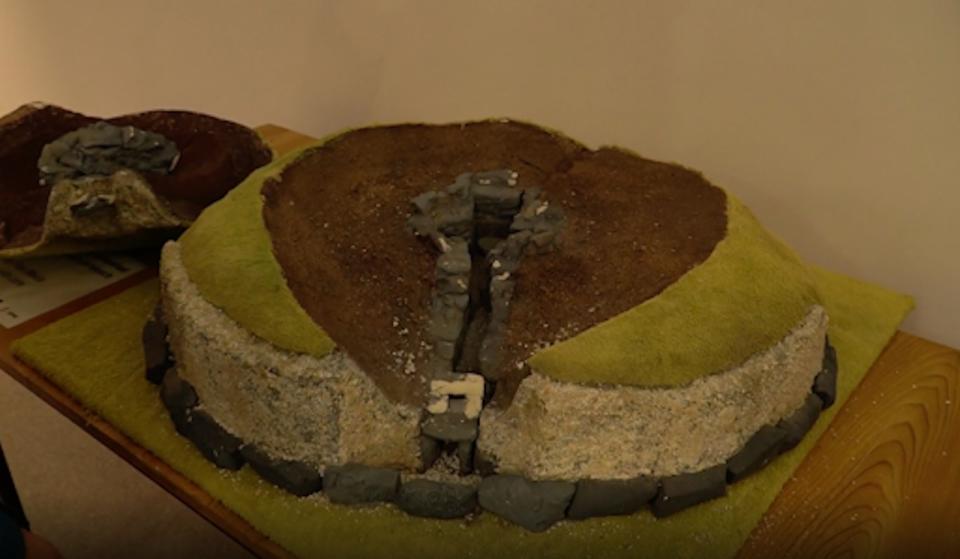Walking through the ancient origins of the winter solstice in Ireland

This Day In Weather History is a daily podcast by Chris Mei from The Weather Network, featuring stories about people, communities and events and how weather impacted them.
--
Dec. 21 is the start of the winter season known as the solstice, which literally means "sun stands still." And that is what it appears to do for a few days around the time of the winter solstice as our Earth transitions between the aphelion, where Earth is farthest from the sun, and the perihelion, where it is nearest. This is where it appears as though the sun is standing still.
Ancients of the distant past all over the world, before the advancement of intelligence, would create stories to explain this strange phenomenon. Many of the most developed people of the primitive past took to building structures in an effort to worship the sun, capture its power, and even use it as a marker in which human life could be navigated.

Newgrange Monument in County Meath, Ireland. (The Weather Network)
For example, where according to Celtic myth, the solstice marked a great battle each year pitting the Oak King, who represented the light, against the Holly King, who represented the dark.
And it would happen that each year the Oak King would claim victory at the winter solstice, meaning the daylight would slowly return to the island until it was time to do battle again at the summer solstice.
At the same time of the year, the ancients introduced a tradition around the world that is still celebrated by another culture that came along sometime afterward. They would gather together as a village, as a tribe, around a roaring fire to stay warm outside by burning yule logs. As well, they would decorate the centre with holly and mistletoe, feasting afterwards with friends and family all gathered together.

Entrance to the Newgrange Monument in County Meath, Ireland. (The Weather Network)
But also carrying on from then to now is the tradition of the pilgrimage to Newgrange to catch a glimpse of the spiritual phenomenon known as the winter solstice. In fact, you can tour and experience a recreation of the solstice year-round. This year's event will also be livestreamed on Instagram.
In fact, its popularity exploded so much that in 2000 a lottery system was created to select only 20 people who can fit in the chamber to witness the beam of light, though weather permitting. Each year, thousands of people from around the world apply in hopes of securing such a coveted rare ticket.
During a rare Irish heat wave in 2018, one of the most important archeological discoveries of our time was made. Appearing in the dried and sunken earth was a large circular enclosure near the famous ancient site, Newgrange, in County Meath. What was it?
Discovered by drone images captured by Anthony Murphy, founder of Mythical Ireland, the visuals showed a potential 4,500-year-old circle outside the 5,200-year-old monument. Murphy said that “we may not see this monument again for two or three decades, depending on when we get another prolonged dry spell like this.”

Model of the Newgrange Monument in County Meath, Ireland. (The Weather Network)
Let's now take a look at the traditional weather pattern and overall climate of County Meath. In December, on average, it will experience rain 12 days out of the month -- averaging 70 mm, among the most per month in a year.
December is also the cloudiest month on average for the calendar year, as well, with an average of only three hours of sunlight per day. For just a touch more salt in the wounds of those ancient farmers, December is the windiest month, with January and February experiencing an average breeze of 20 km/h. In recent years, this area sees 12 days of sunshine, seven cloudy, and 12 with rainy and clouds, on average in December.
To hear more about the origins of the ancient tales behind the winter solstice, listen to today's episode of "This Day In Weather History."
Subscribe to 'This Day in Weather History': Apple Podcasts | Amazon Alexa | Google Assistant | Spotify | Google Podcasts | iHeartRadio | Overcast'
Thumbnail courtesy The Weather Network

